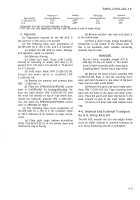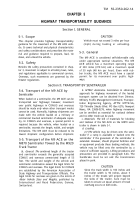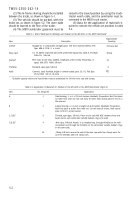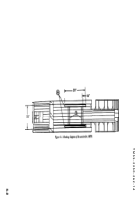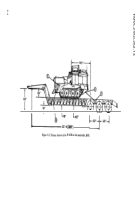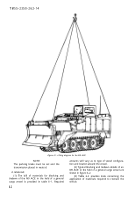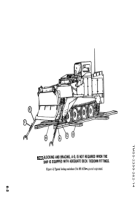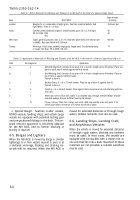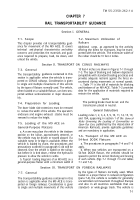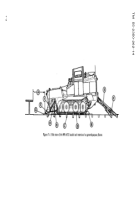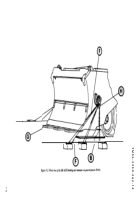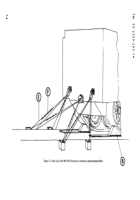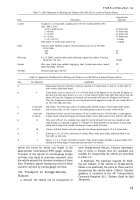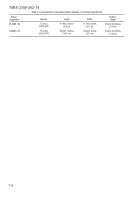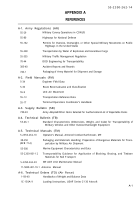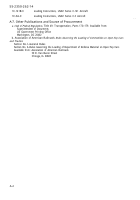TM-55-2350-262-14 - Page 34 of 42
TM
CHAPTER
7
RAIL TRANSPORTABILITY GUIDANCE
55-2350-262-14
Section I.
7-1. Scope
This chapter provides rail transportability guid-
ance for movement of the M9 ACE. It covers
technical
and physical
characteristics
and safety
concerns and prescribes the materials and guid-
ance required to prepare, load, tie down, and
unload the vehicle.
7-3. General
The transportability
section is applicable
Section Il. TRANSPORT
guidance contained in this
when the vehicle is trans-
ported on CONUS railways. Consideration is given
to single and multiple movements of this vehicle
by the types of flatcars normally used. The vehicle,
when loaded on a suitable flatcar, can be trans-
ported without sectionalization or major disassem-
bly.
7-4. Preparation for Loading
The dozer blade side extensions must be removed
to
reduce the width of the vehicle. The operator’s
enclosure and engine exhaust
removed to reduce the height.
7-5. Loading of the M9
General-Purpose Flatcars
stacks must be
ACE on
a. A crane may place the vehicle in the tiedown
position on the railcar, approximately centered, or
the vehicle may be driven or towed aboard if a
suitable ramp or bridge is available. When the
vehicle is loaded by crane, the procedures and
precautions outlined in paragraph 6–4b will be
observed. Once the vehicle is loaded on the railcar,
but before it is tied down, relieve the hydraulic
pressure to allow the vehicle to settle.
b. Typical
loading diagrams of an M9 ACE on a
general-purpose flatcar with a minimum width of
GENERAL
7-2. Maximum Utilization of
Railcars
Additional
cargo,
as approved by the activity
offering the items for transport, may be trans-
ported with the vehicle. The minimum width of
the railcar should be 10 feet 4 inches.
ON CONUS RAILWAYS
10 feet 4 inches are shown in figures 7–1 through
7–3. The type of blocking and tiedown depicted is
compatible with standard loading practices and
provides adequate restraint against the forces en-
countered during movements at normal speeds.
c. Table 7-1 is the bill of materials for blocking
and tiedown of an M9 ACE. Table 7–2 provides
data for the application of materials required to
restrain the vehicle.
NOTE
The parking brake must be set
transmission placed in neutral.
General Instructions
and the
Loading rules 1, 2, 3, 4, 5, 9, 10, 11, 14, 15, 19,
and 19A, appearing in section 1 of the
General
Rules Governing the Loading of Commodities on
Open-Top Cars,
published by the Association of
American Railroads, provide applicable guidelines
and are mandatory in application.
7-6. Transport of the M9 ACE on
54-foot DODX Flatcars
a. The procedures in paragraphs 7–4 and 7–5
apply.
b. When two vehicles are transported on a
54-foot DODX flatcar, the vehicles should be
spaced to permit the correct blocking and bracing
of each vehicle. (figs 7–1 through 7-3 and tables
7-1 and 7-2).
Section Ill. TRANSPORT ON FOREIGN RAILWAYS
7-7. General
by the types of flatcars normally used. When
loaded on a proper flatcar in reduced configuration
The transportability guidance contained in this
(para 7-4), the vehicle is suitable for generally
section is applicable when the M9 ACE is trans-
unrestricted rail movement throughout Europe
ported on foreign railways. Consideration is given
and also in all countries worldwide that use
to single and multiple movements of this vehicle
standard- or wide-gauge track. The vehicle is
7-1
Back to Top

